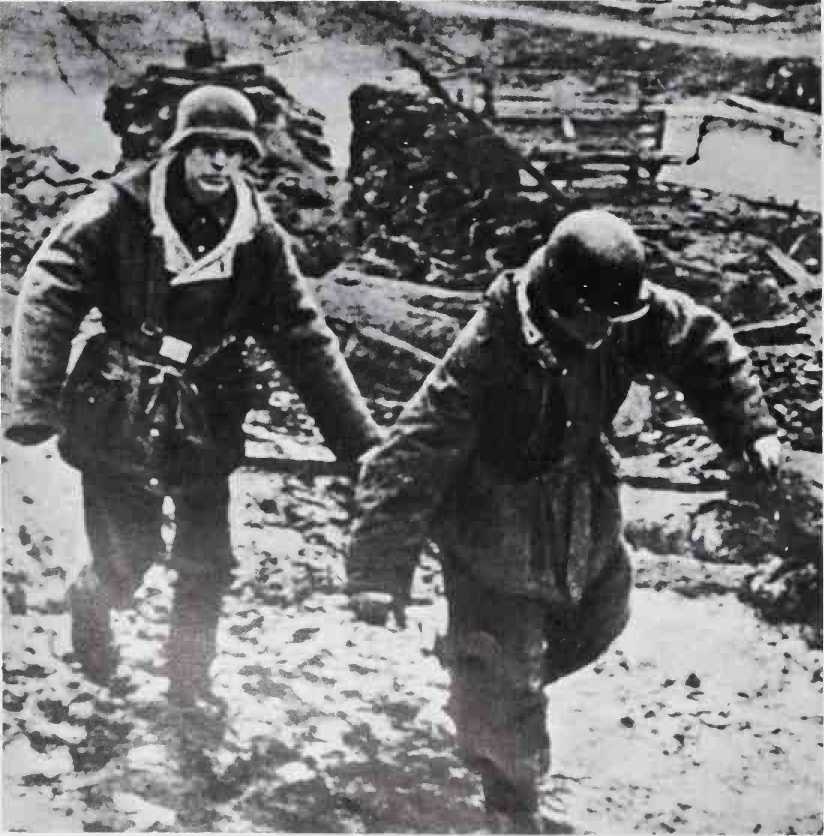V and Once again the spring rasputitsa engulfed the Eastern Front battlefields in mud and slush. In the spring of 1943 it had caused Manstein's great counter-offensive to peter out; now, in 1944, the slowing-down of the war of movement favoured the hard-pressed Wehrmacht.
Victims of the winter fighting are brought to light by the thaw.

No sooner had the Russians closed the ring around XI and XLII Corps, than Field-Marshal von Manstein, just installed in the H. Q. which he had had transferred from Vinnitsa to Proskurov, learnt that the 3rd and 4th Ukrainian Fronts’ forces had begun a combined attack on the Nikopol’ bridgehead. But he was soon spared the anxiety of having to wage two defensive battles simultaneously, for on February 2, by order of O. K.H., the 6th Army, which was fighting in this sector, was transferred from Army Group "South” to Army Group "A”.
Due to Hitler’s obstinacy, Manstein left a rather poor legacy to Field-Marshal von Kleist, since the four corps comprising the 6th Army were completely worn out and, in addition, were firmly held in a pincer movement between the 3rd and 4th Ukrainian Fronts’ forces; though the thick mud would soon thwart Generals Malinovsky and Tolbukhin in their attempt to benefit strategically from the tactical advantages which their superior resources had given them.
On February 3, General Malinovsky’s 46th and 8th Armies reached Apostolovo, 30 miles from Nikopol’, at the same time as the 4th Ukrainian Front’s forces were going in to storm this 1 atter to wn’s defences on the left bank of the Dniepr. Whereupon a command from the Fiihrer ordered General von Vormann to send in his 24th Panzer Division; but this formation, though most ably commanded by Lieutenant-General M. von Edelsheim, arrived too late to plug the gap in the line at Apostolovo, as Wohler and Manstein had tried to tell Hitler it would.
Against the Nikopol’ bridgehead General Tolbukhin sent in no fewer than 12 infantry and two armoured divisions; General F. Schorner defended it with six infantry divisions and the two Panzer divisions of his XXX Corps. However, the strength of the former had been reduced to that of just one regiment, whilst on the day of the attack, the Panzer divisions had only five sound tanks. Despite the strong Nazi convictions which imbued Schorner and made him resist with great courage, he was pushed back from the right bank of the Dniepr, leaving behind him large quantities of materiel; on February 9, the 4th Ukrainian Front’s forces liberated Nikopol’, though the important engineering centre of Krivoy-Rog was not taken by the 3rd Ukrainian Front forces until February 22. By the end of the month the German 6th Army, in considerable disarray, had taken up positions behind the Ingulets, a tributary of the Dniepr, which flows into it just east of Kherson.




 World History
World History









